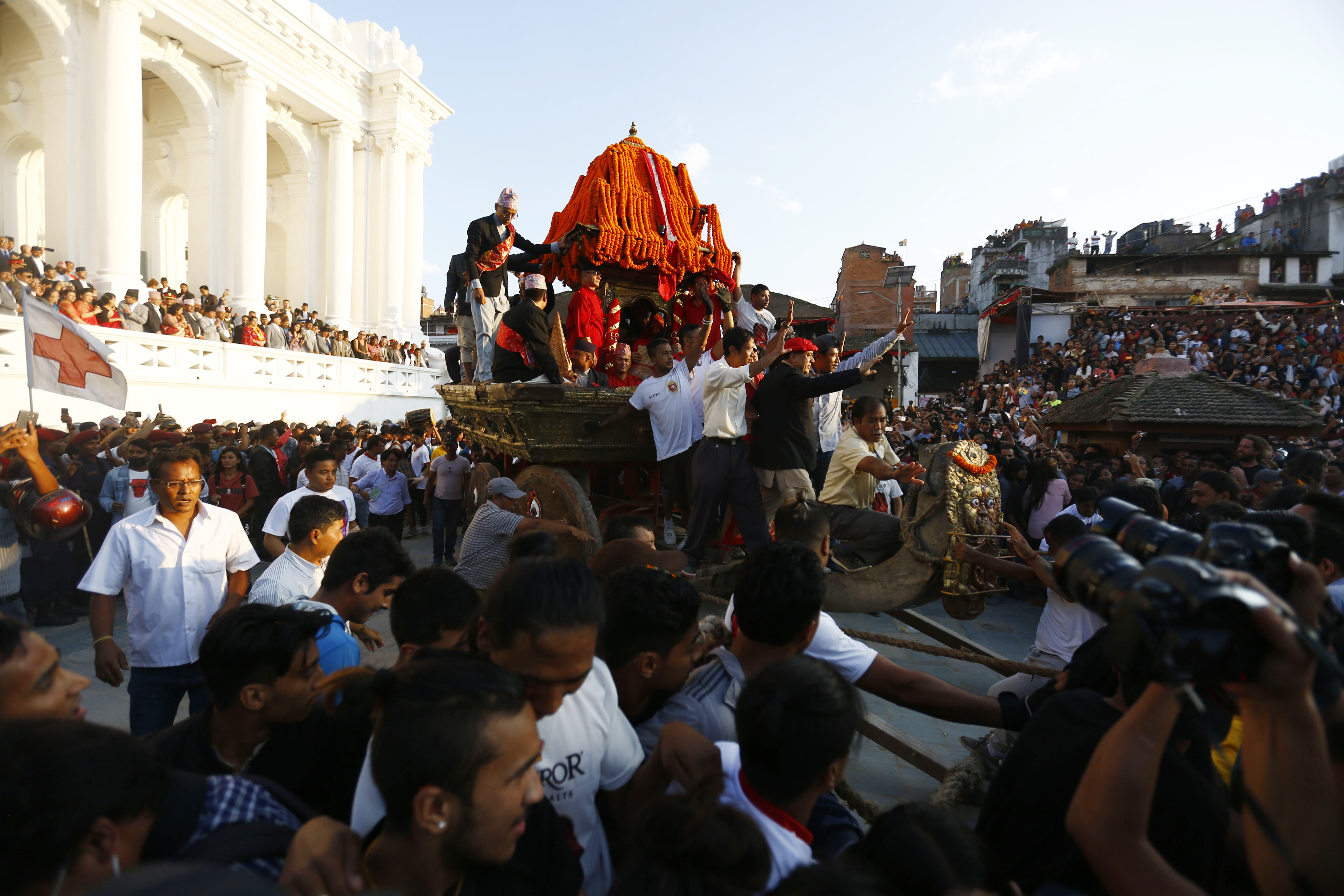Indra Jatra celebrated with fervour
Kathmandu, September 24
President Bidhya Devi Bhandari today visited Basantapur Durbar area to receive blessing from the living goddess Kumari, lord Bhairab and lord Ganesh on the occasion of Indra Jatra.
The chariot pulling ceremony of the gods and goddess began after the president visited the site and offered worship to the gods.
Like the goddess Kumari who is presented by virgin girls, lord Bhairab and lord Ganesh were presented by young boys, who sat on the chariot, while thousands of locals offered prayers to them.
The president visited the festival following a centuries old tradition according to which the head of the state appears before the procession starts.
This is the first Indra Jatra of the living goddess Kumari after she became the Lumari year ago. The head of state offered prayers for the first time from the quake damaged historic Gaddhi Baithak, which was recently restored.
Indra Jatra is an eight-day festival celebrated by the Newar community of Kathmandu valley and some other Newari settlements across the country. One of the most important events of the festival is the pulling of the chariots of the goddess and the two gods. The festival that began today will continue for two more days.
Hundreds of women pulled the three chariots to the lower city of Basantpur area, along the Jaisidewal-Lagan-Bhimsensthan-Basantapur route. The chariots will be pulled to the upper city of Basantapur tomorrow from Pyakhal, Nardevi, Ason and then back to Basantapur. Similarly, the chariot will be pulled in the central city — Nardevi-Kilagal-Indrachowk and back to Basantapurfor for seven days later.
The festival started three days ago after erecting a sacred wooden pole (lingo) at Hanumandhoka in Basantapur Durbar Square. The lingo was brought from Nala of Kavre district. Various dances and ritual practices like Bhairab dance, Kumari dance are performed in core Newari settlements, especially in Basantapur.
Indra Jatra also marks the end of the monsoon and the beginning of harvest season and it is marked with joy and festivity. It is believed that the festival has been celebrated since the Licchivi era. The chariot pulling function however started after 1755 after Jay Prakash Malla, the king of Kathmandu, established the Kumari house in Basantapur. Historian Kasi Nath Tamot said Indra Jatra has emerged through various political and religious transitions. “The festival, which used to be centred on the celebration of lord Bishnu in the Licchavi period was centered around the celebration of lord Indra in the Malla period. However, the activity of chariot pulling, which was started by the last Malla King was taken up by the Shah dynasty, and this activity centred around the living Goddess Kumari.”
Legend has it that, in ancient times, Indra, the lord of heaven had descended to the earth in search of a flower called Parijat (a night flowering jasmine) to perform a puja for his mother. He was in disguise. A trantric priest from Kathmandu, however, recognised him and tied him with a magical thread. Knowing this, the mother of Indra herself came to the city and offered morning fog to Kathmandu as ransom for the release of her son.






